Traits
(R_) roan (Natural)
Name: Roan
Base Genotype: R_
Skin Color: No effect.
Eyes: No effect.
Description: Roan causes white hairs to grow, but only on the neck and body of the horse. Roan may have "grease spots" where the base coat of the horse shows through. These are usually small and no bigger than the horse's eye. Roan is a dominant gene, so only one copy is required for it to be visible. Roan has several names for it's variations, which can all be searched on for real-life references:
- "Strawberry Roan" or "Red Roan" : a chestnut horse with roan
- "Bay Roan" : a bay horse with roan
- "Blue Roan" : when a black horse has roan
Design Guidance: At minimum, the coat can be slightly lightened. At maximum, the coat is strongly lightened. Lightening of the coat should not extend onto the horse's head, down past the knees, or down past the hocks on the hind legs. If paired with dun, the dorsal and leg striping will still be visible. Horses may have different variations of the examples below:
An example of minimal roan, and then maximum roan on all three base coats:
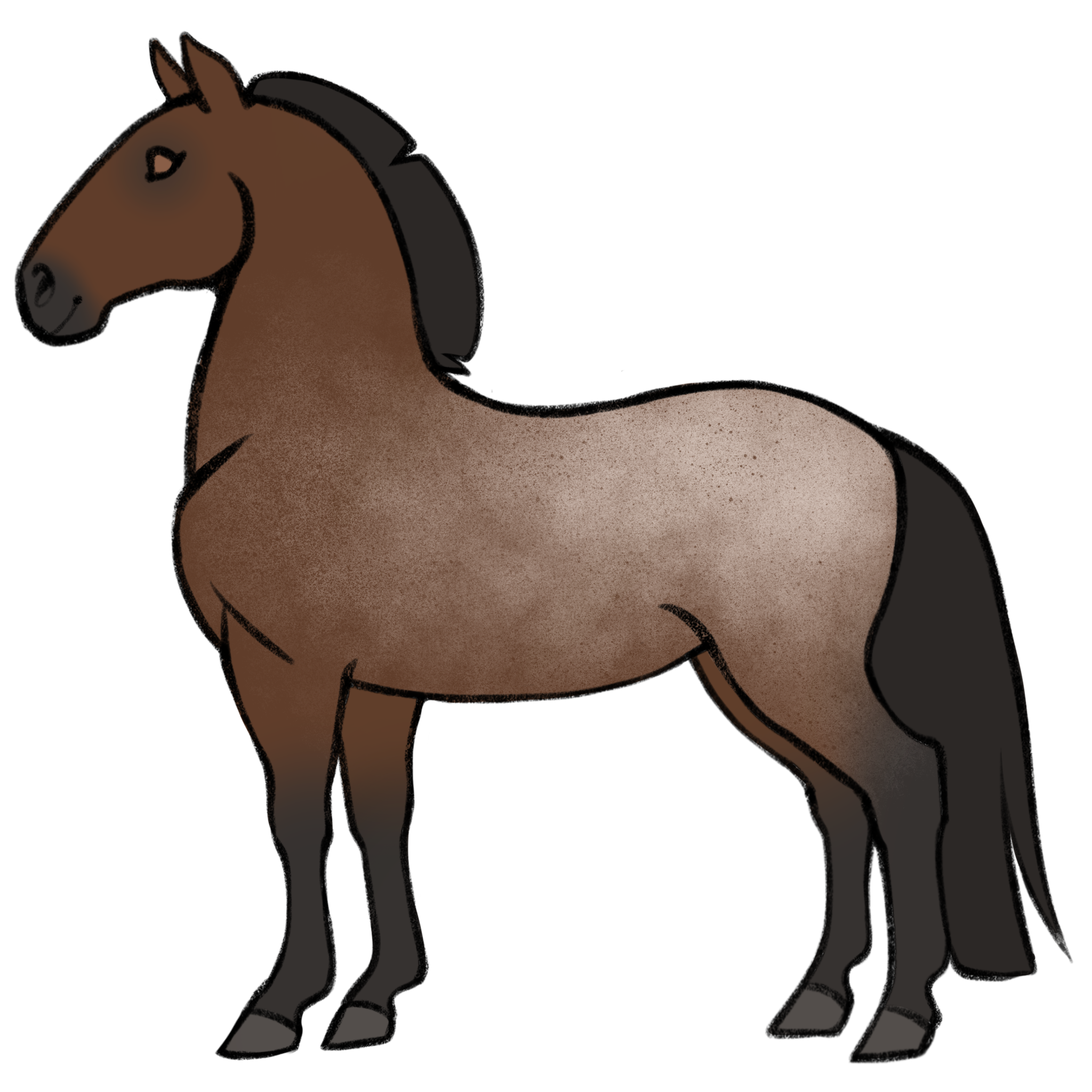
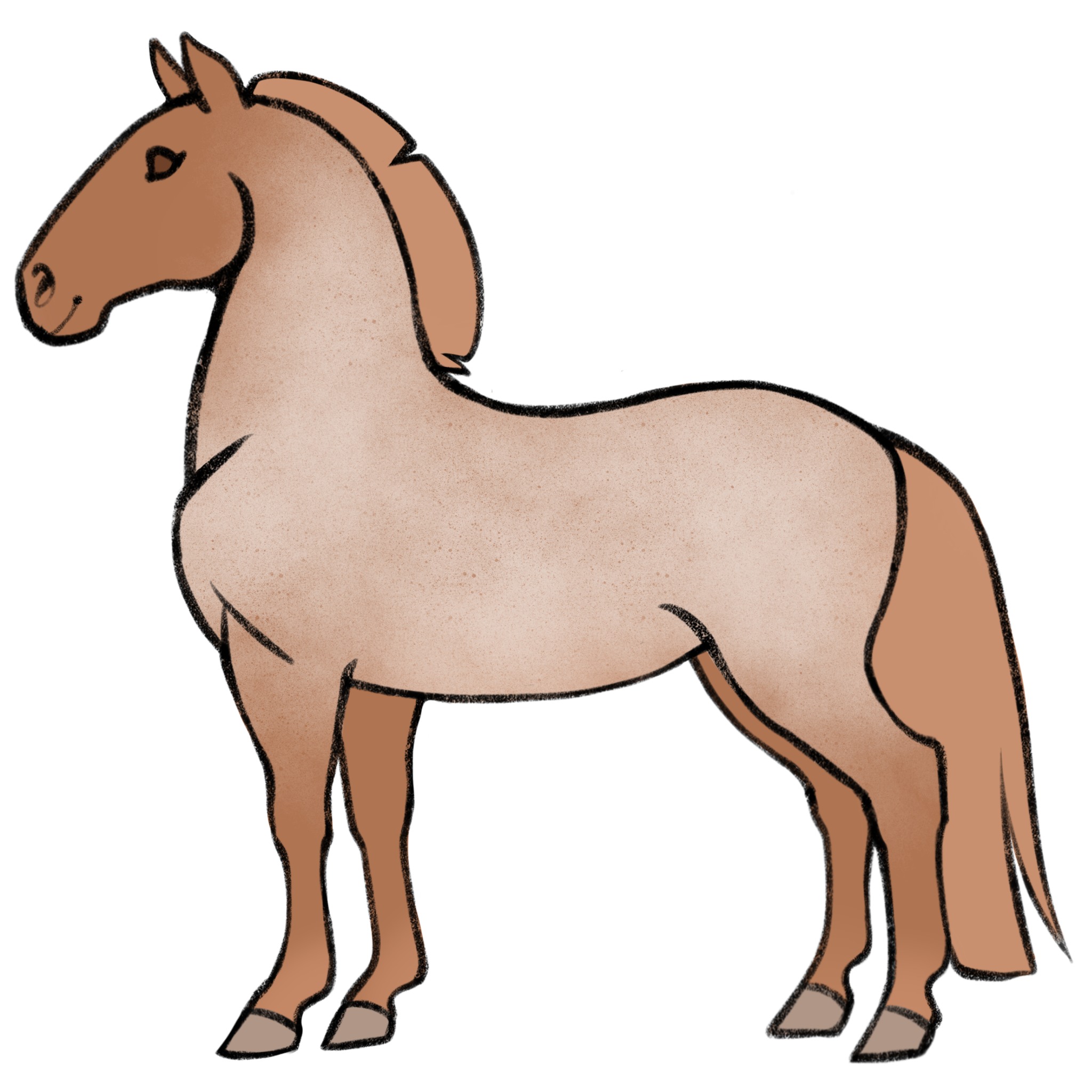
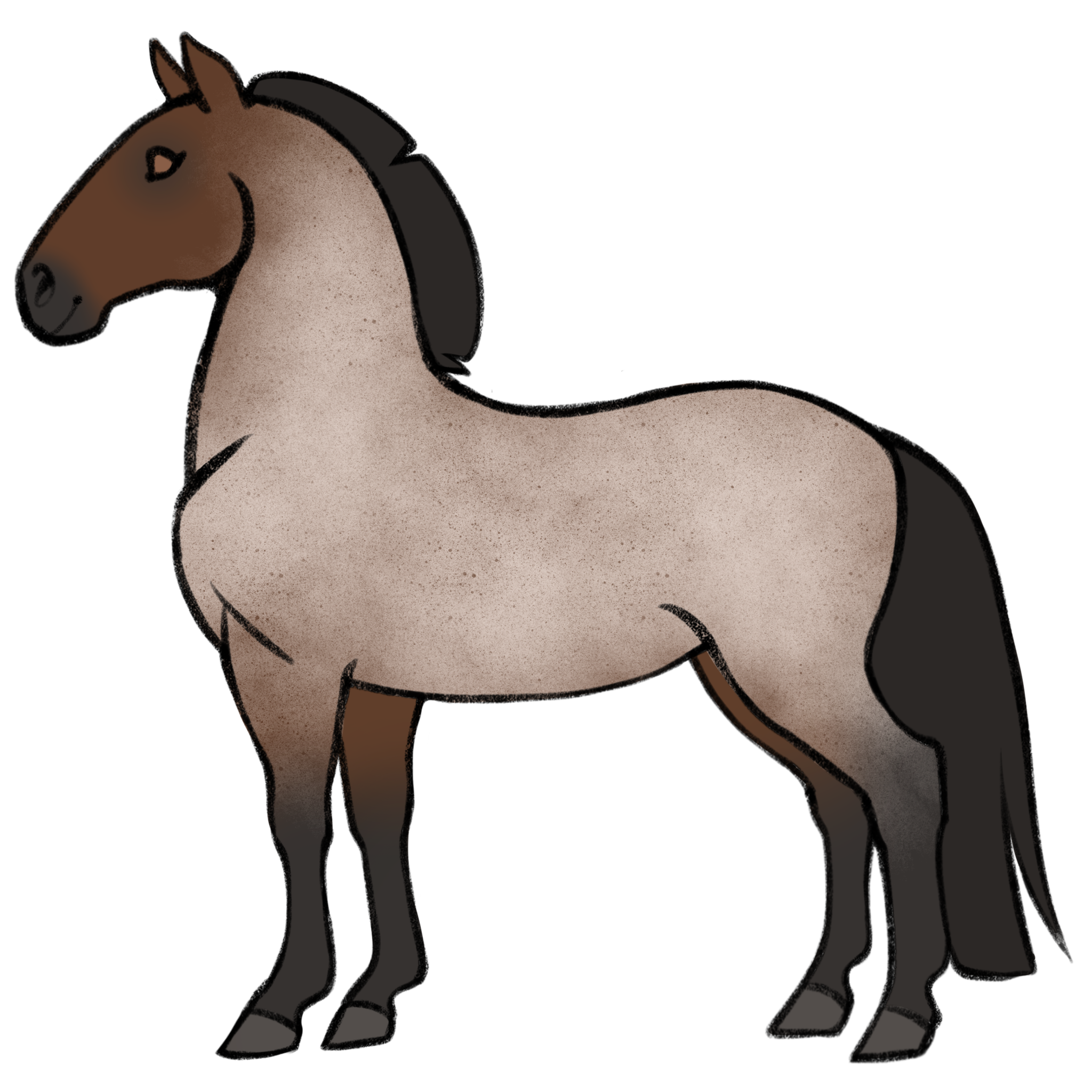

(TO_) tobiano (Natural)
Name: Tobiano
Base Genotype: TO_
Skin Color: Skin becomes pink under white markings.
Eyes: If a white marking touches an eye, it becomes blue. Heterochromia is common.
Description: Tobiano causes large round patches of white that cross over the top of the body. Round patches may have spotting within them (sometimes referred to as "cat tracks") and haloing around the edges. Tobiano may cause a high number of natural white markings on the face and legs. Flashy amounts of white on the legs is common. Facial markings should stay within a natural range on the forehead only, as tobiano does not cause large amounts of facial white like overo. Keep in mind that if a white patch turns the ears of the horse white, the horse is highly likely if not guaranteed to be deaf! Tobiano has several names for it's variations, which can all be searched on for real-life references:
- "Skewbald" : a chestnut or bay horse with tobiano
- "Piebald" : a black horse with tobiano
- "Tovero" : a horse that has both tobiano and overo
- "Medicine Hat" : a tovero horse that is all white, except for a dark patch ("hat") over the ears, and dark patches on the chest and/or flank ("shields.")
Design Guidance: At minimum, the horse may have natural white markings on the face, such as a snip, blaze, or stripe; and at least three legs with white markings that extend above the pastern. At maximum, the horse is nearly all white, with color only visible on the head. Ears are rarely turned white, but it happens (and may cause deafness). The mane and tail is white where it touches white patterned skin. Hooves become light colored where white patterns touch, as does skin.
Examples of a chestnut tobiano, bay tobiano, and a black tovero (medicine hat) horse.

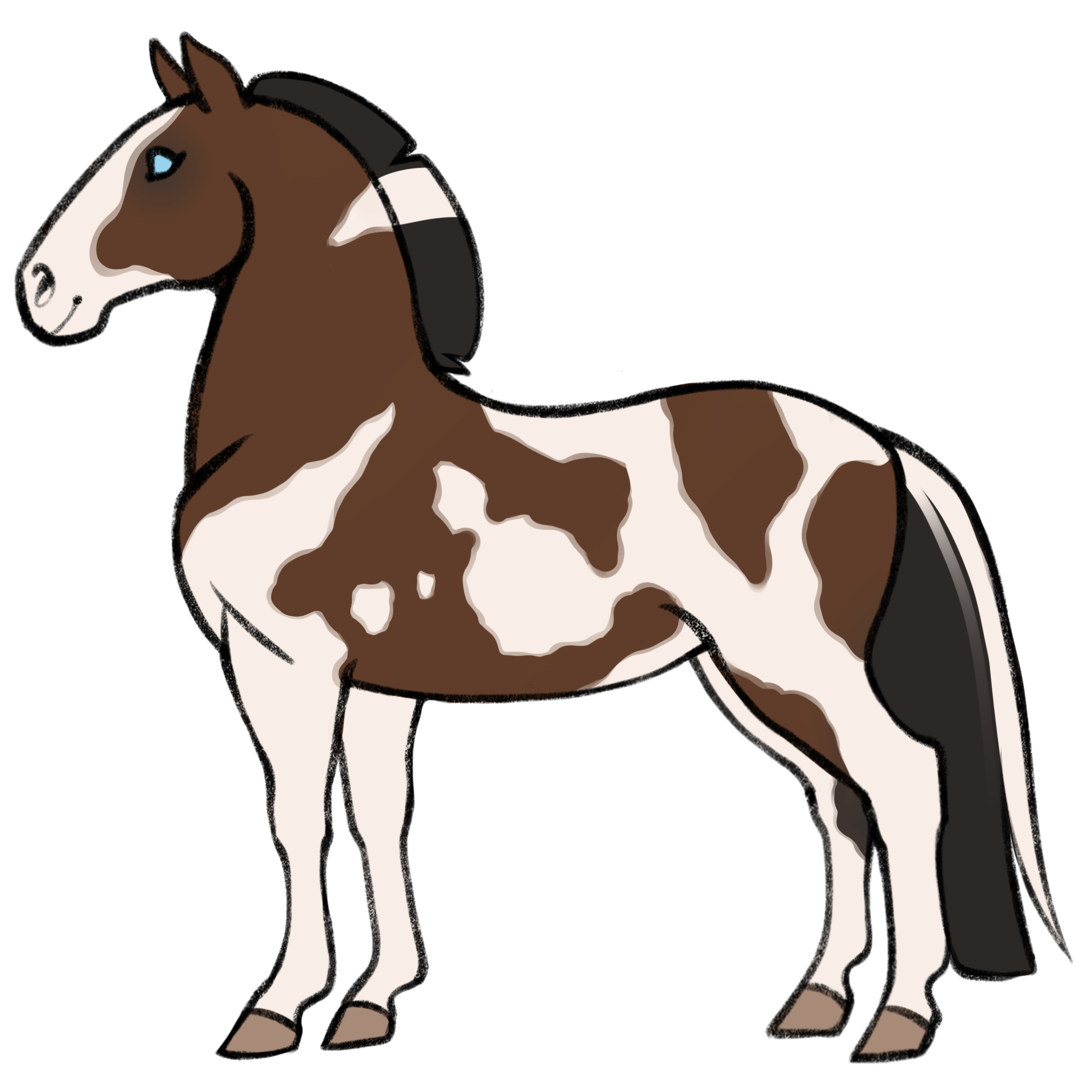
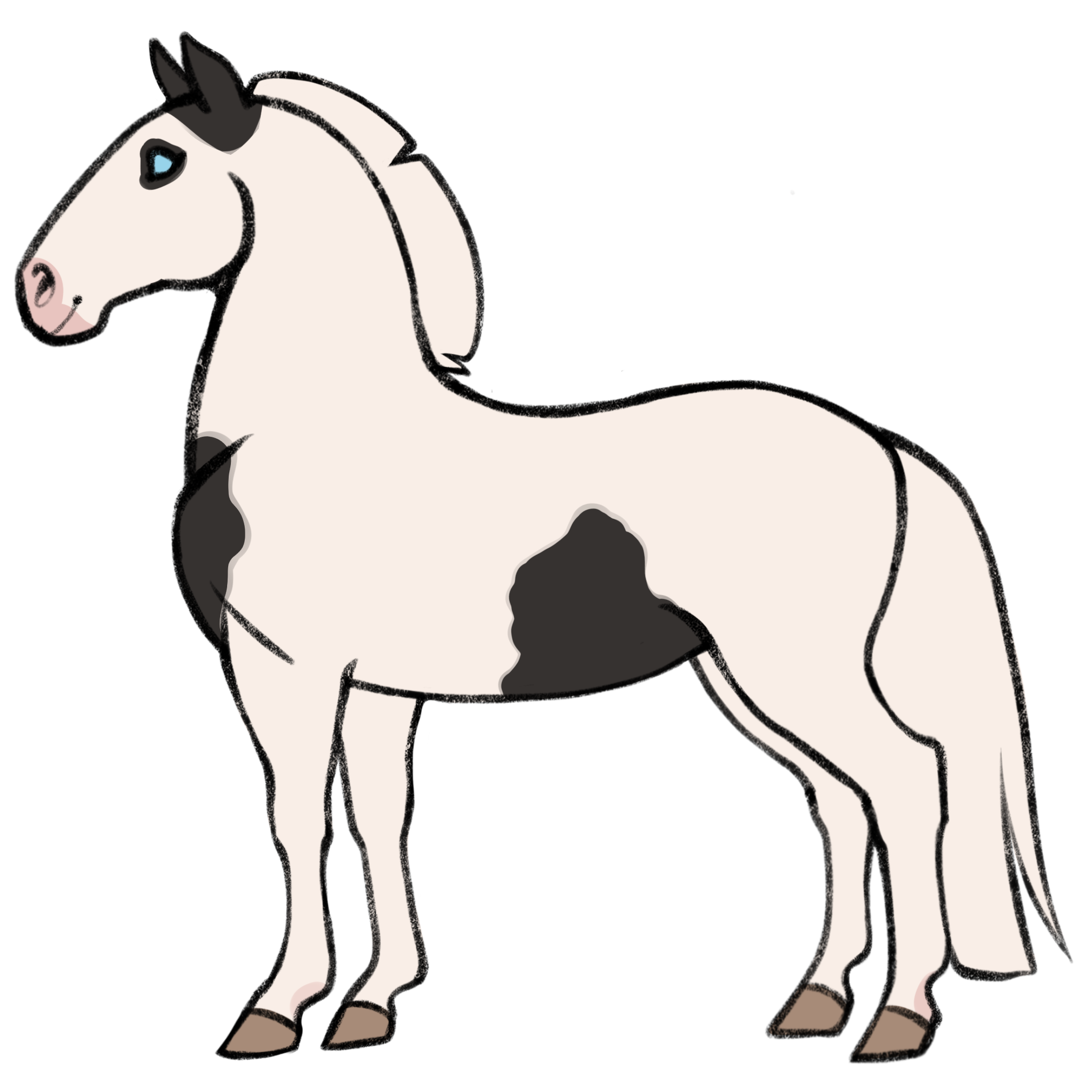
(O_) overo (Natural)
Name: Frame Overo
Base Genotype: O_
Skin Color: Skin becomes pink under white markings.
Eyes: If a white marking touches an eye, it becomes blue. Heterochromia is common.
Description: Frame Overo causes jagged white patches to appear in the center of the horses body when viewed from the side, causing the white to look "framed" by the color of the base coat. Frame Overo by itself will never cross the back of the horse. Facial markings are usually large and striking. Baldface is common, as is "eyeliner" on baldfaced horses. Keep in mind that if a white patch turns the ears of the horse white, the horse is highly likely if not guaranteed to be deaf! Also, if two horses who carry overo are bred together, and the foal inherits both copies of overo, the foal will be marked as deceased due to Lethal White Overo syndrome. You won't get your breeding slot back, so please take care when selecting horses for breeding! Overo has a few variations when combined with tobiano, which can all be searched on for real-life references:
- "Tovero" : a horse that has both tobiano and overo
- "Medicine Hat" : a tovero horse that is all white, except for a dark patch ("hat") over the ears, and dark patches on the chest and/or flank ("shields.")
Design Guidance: At minimum, the horse may have white markings on the face, such as a snip, blaze, badgerface, or baldface; any facial markings are allowed, not just minimal natural facial markings such as with tobiano. At maximum, the white patch covers the entire side of the horse, but still does not cross over the horse's midline. Ears are rarely turned white, but it happens (and may cause deafness). The mane and tail will remain unaffected because overo will never touch the mane or tail, as they are on the midline of the horse. Skin becomes light colored where white patterns touch.
Examples of a chestnut overo with minimal markings, a bay overo with average markings, and a black overo with maximal markings.
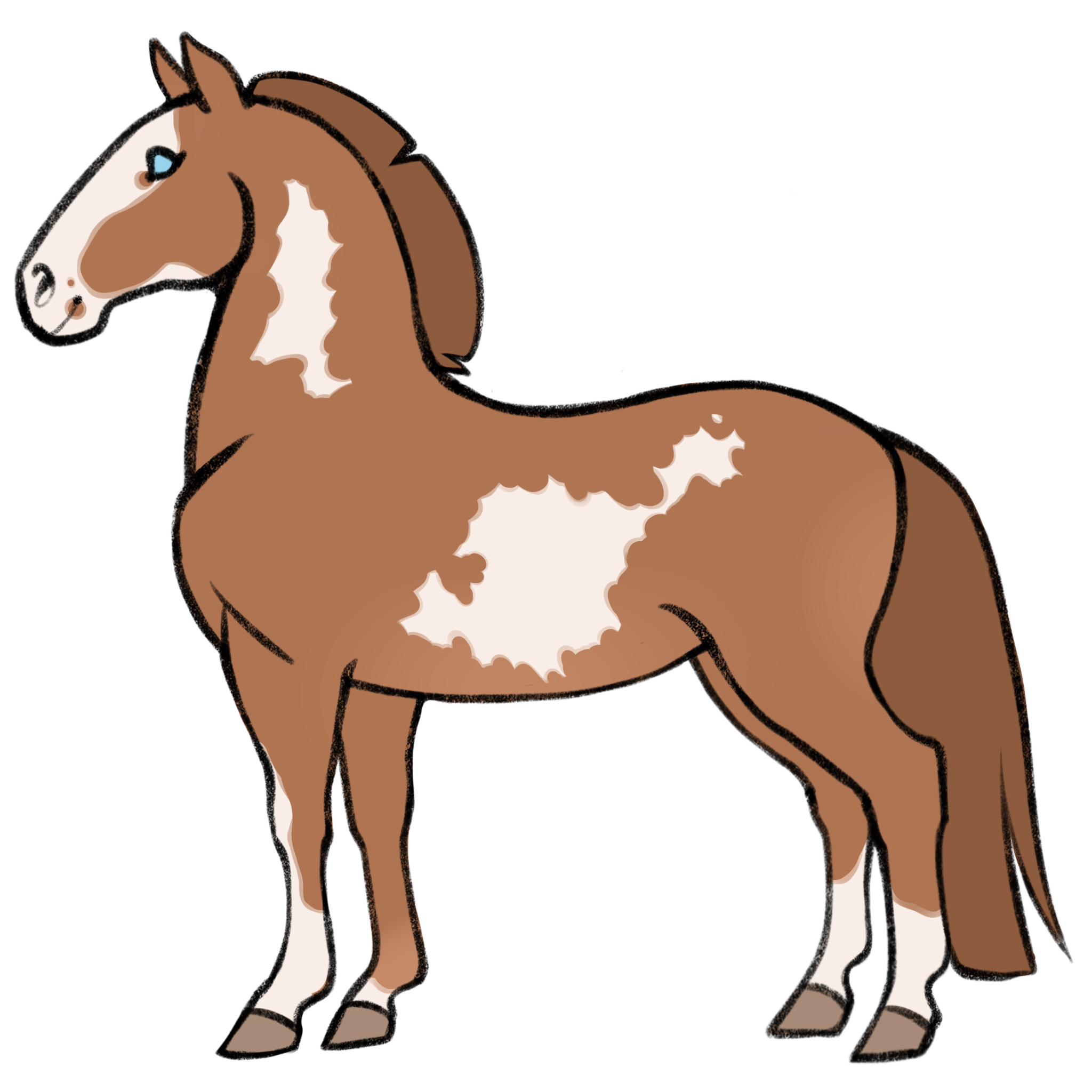

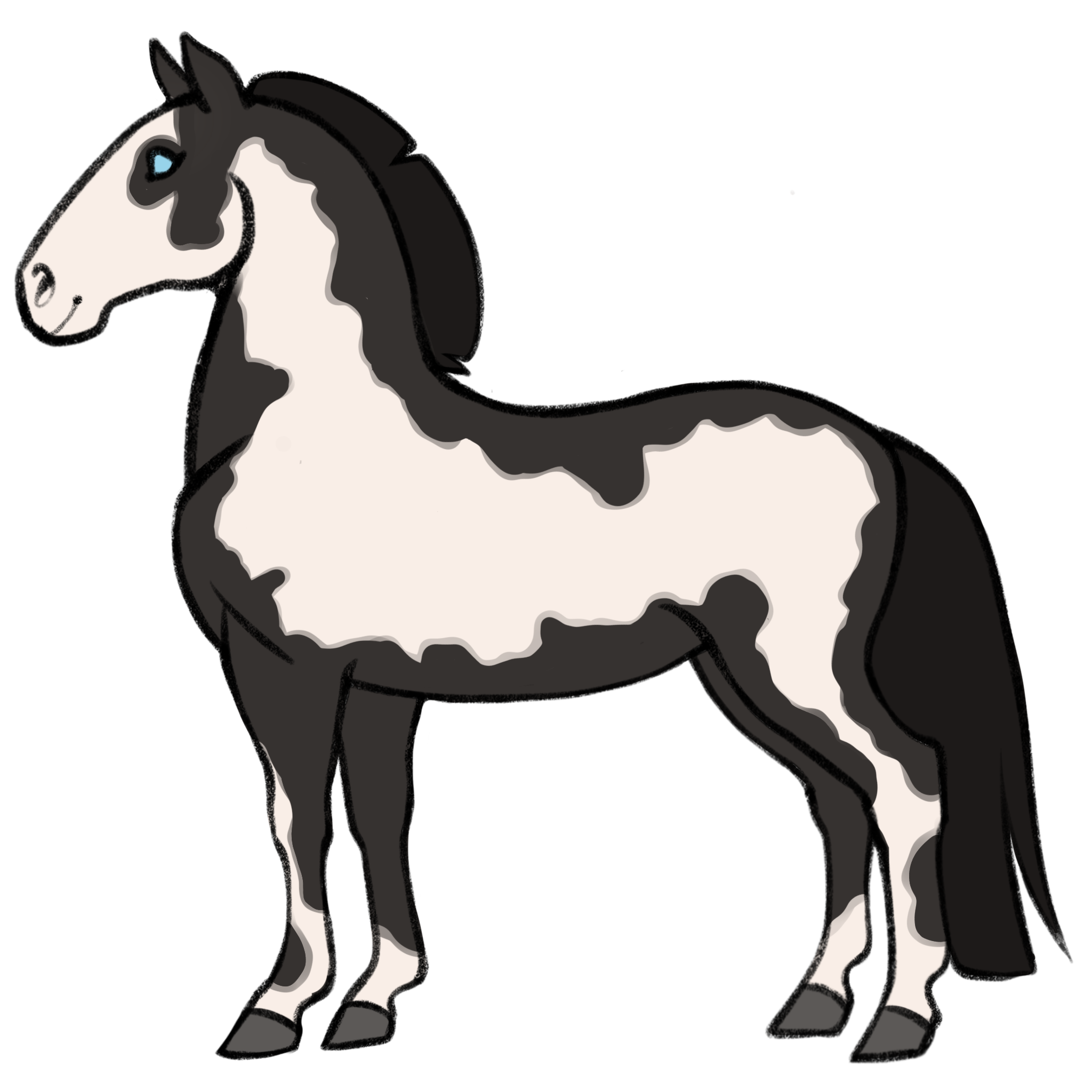
(SPL_) splash (Natural)
Name: splash
Base Genotype: SPL_
Skin Color: Skin becomes pink under white markings.
Eyes: If a white marking touches an eye, it becomes blue. Heterochromia is common.
Description: Splash causes large white patches to appear from the legs of the horse and upwards, as if the horse has been dipped in white paint! Splash by itself will never cross the back of the horse. Facial markings are usually large and striking. Keep in mind that if a white patch turns the ears of the horse white, the horse is highly likely if not guaranteed to be deaf!
Design Guidance: At minimum, the horse must have four white coronet bands. Must have a white marking on the face, such as a snip, blaze, badgerface, or baldface; any facial markings are allowed, not just minimal natural facial markings such as with tobiano.
At maximum, the white covers the entirey of the horse, but still does not cross over the horse's spine. Edges of the white pattern are smooth and sloping, with no spots of base color within the patch. Ears are rarely turned white, but it happens (and may cause deafness). The mane and tail will turn white where touched. Skin becomes light colored where white patterns touch.
Examples of a chestnut splash with maximal markings, a bay splash with average markings, and a black splash with more minimal markings.
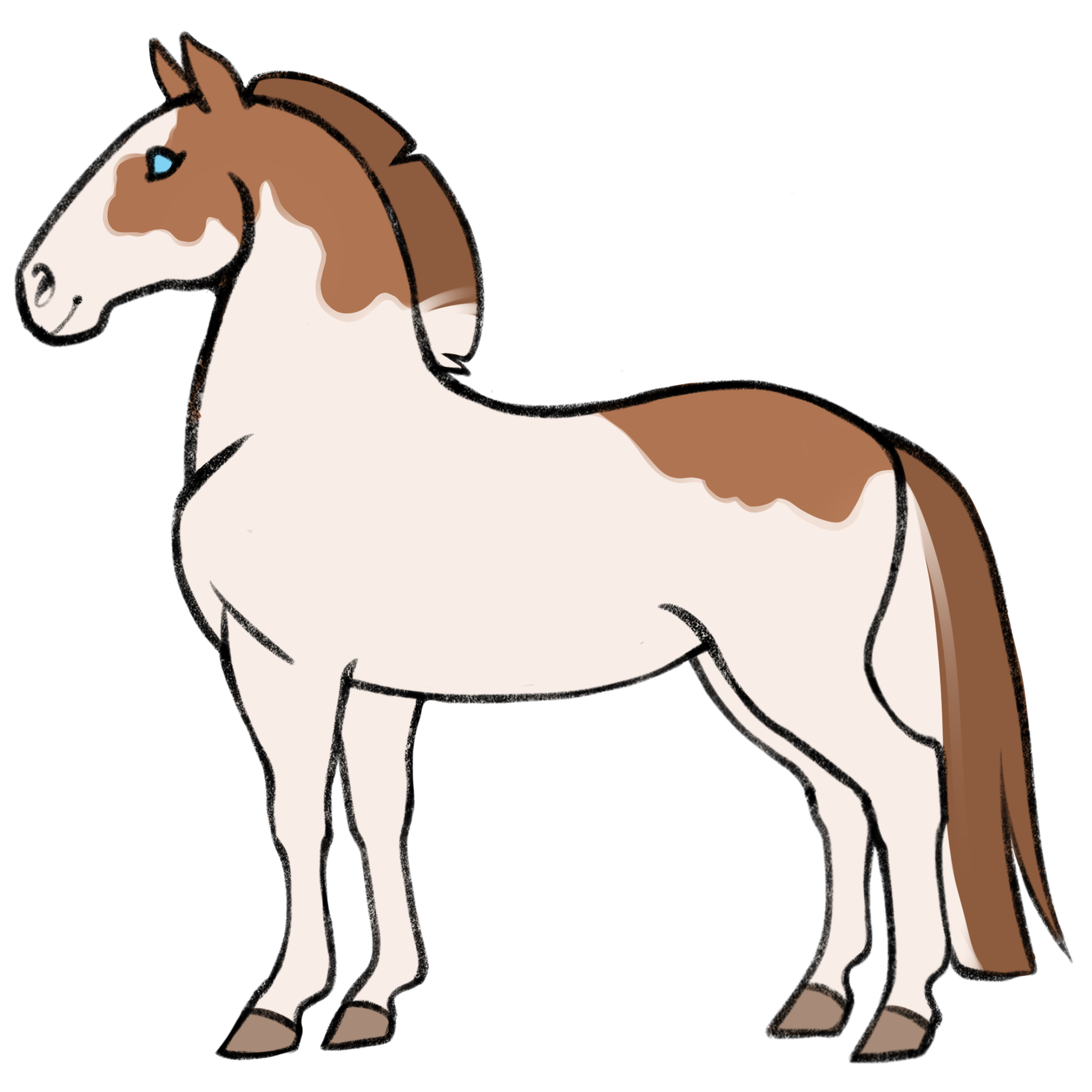
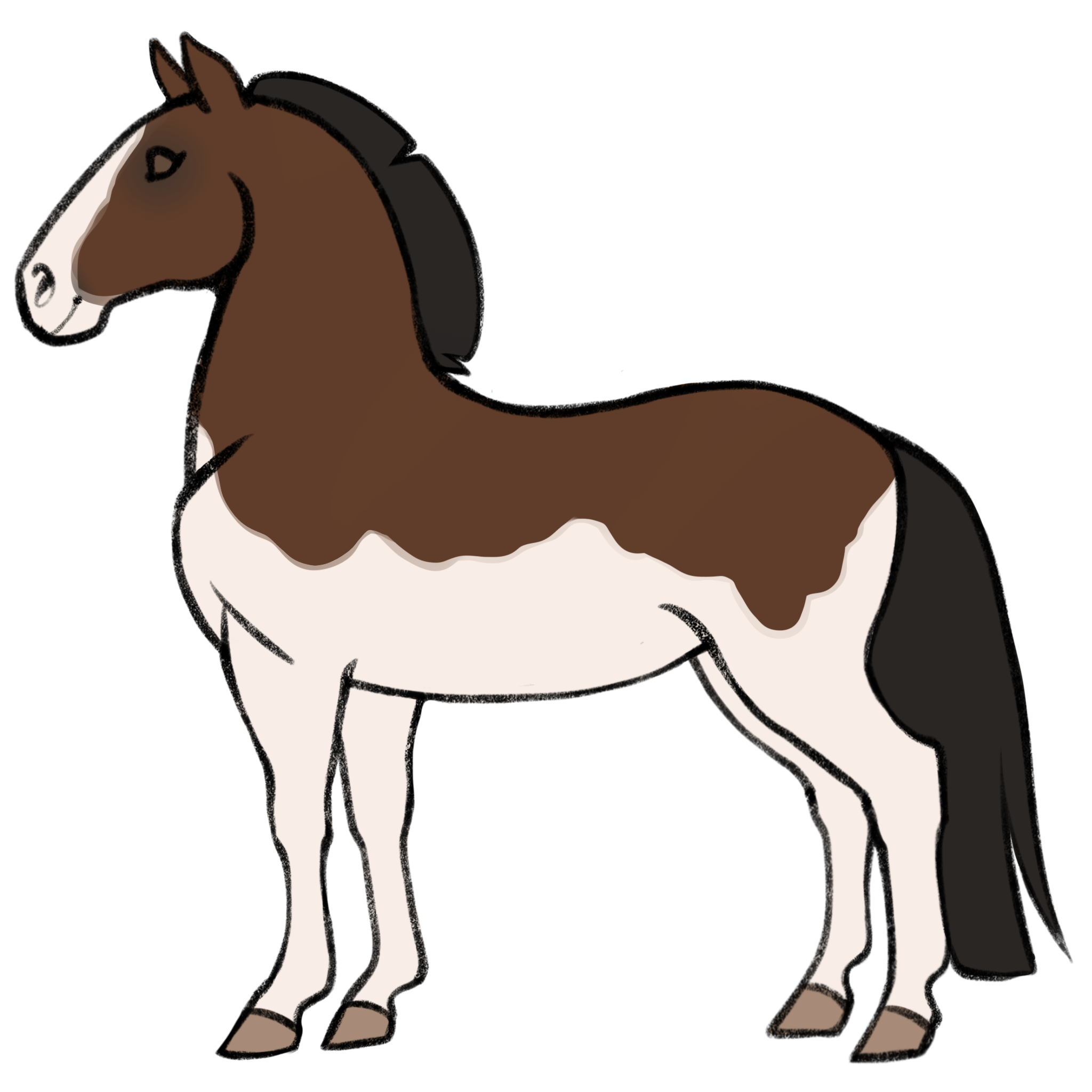
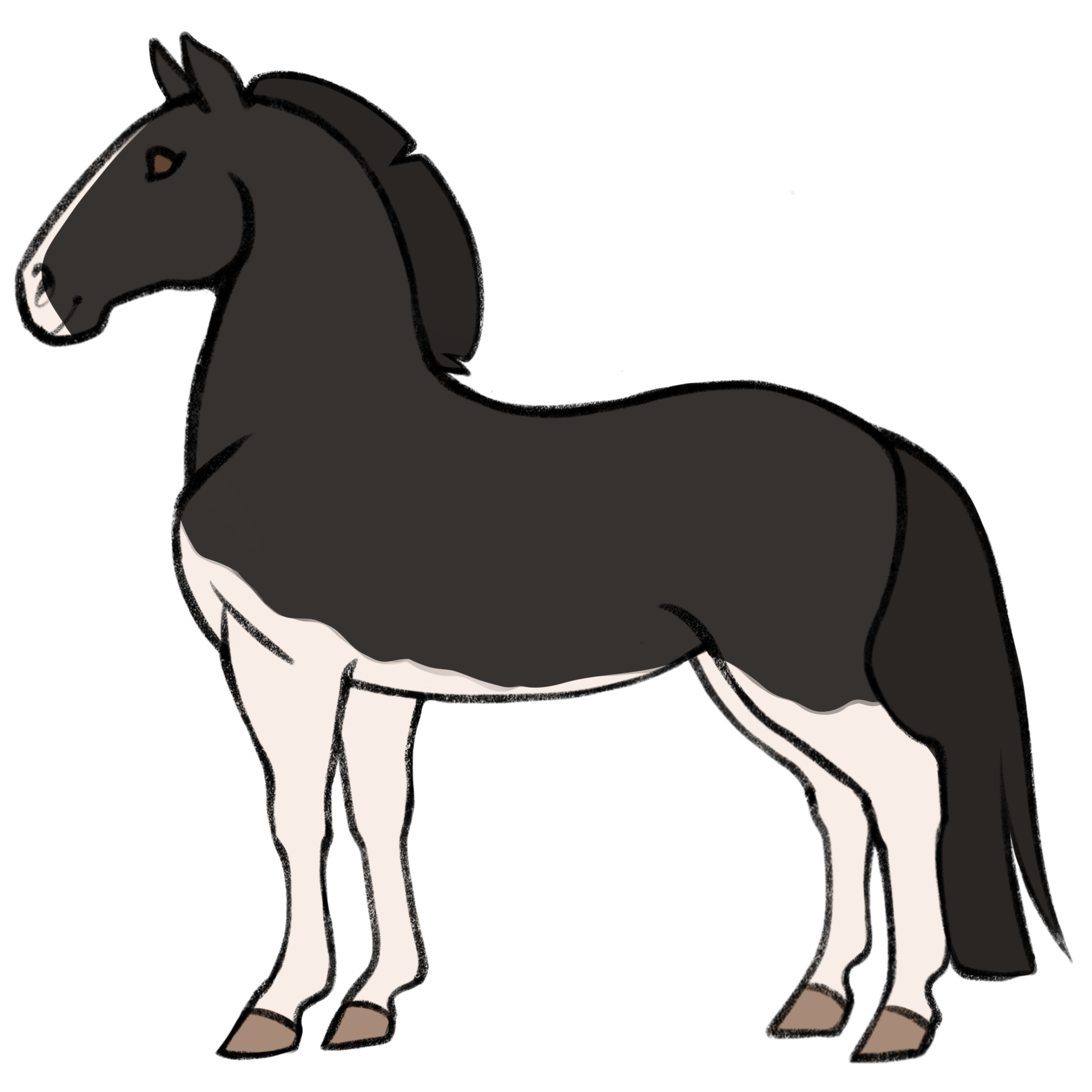
(SB_) sabino (Natural)
Name: sabino
Base Genotype: SB_
Skin Color: Skin becomes pink/mottled to match the mottled white markings.
Eyes: If a white marking touches an eye, it becomes blue. Heterochromia is common.
Description: Sabino causes large white patches to appear from the legs of the horse and upwards, just like Splash, except Sabino causes extreme mottling or "frosting" of the white pattern and roaning of the coat. Sabino roaning may cross the back of the horse, but the bulk of the white pattern originates from the legs and belly. Facial markings are usually large and frosted around the edges. Mottling of skin will occur wherever the white frosting turns the skin pink. Keep in mind that if a white patch turns the ears of the horse white, the horse is highly likely if not guaranteed to be deaf!
Design Guidance: At minimum, sabino can be invisible, or have mottled white leg and face markings.
At maximum, the white covers up to 75% of the horse from the bottom up, with the bulk of the white favoring the legs and belly. Edges of the white pattern are mottled dots or otherwise jagged. Ears are rarely turned white, but it happens (and may cause deafness). The mane and tail will turn white where white patterns touch. Skin becomes light colored where white patterns touch.
Examples of a chestnut sabino with minimal markings, a bay sabino with average markings, and a black sabino with more maximal markings.
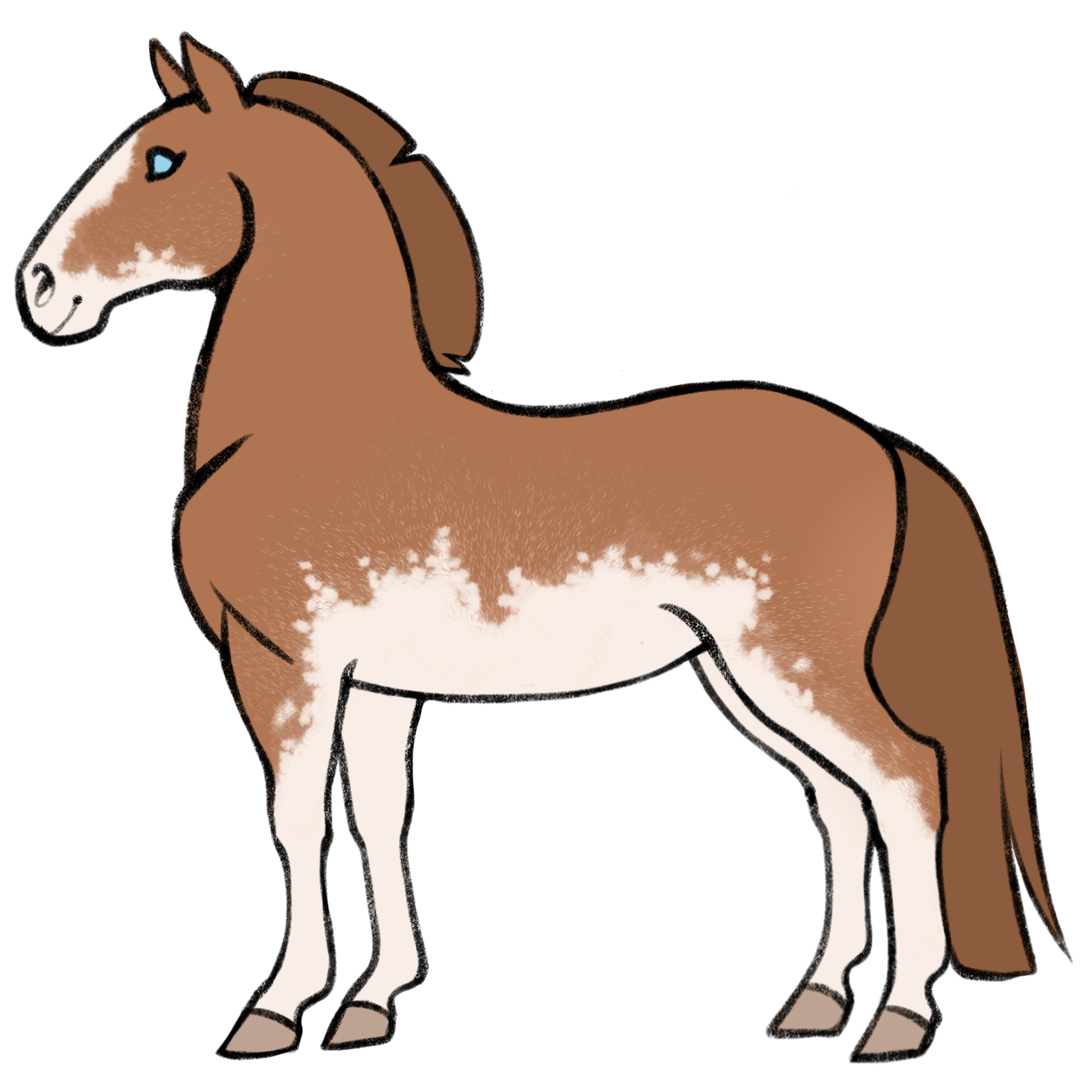
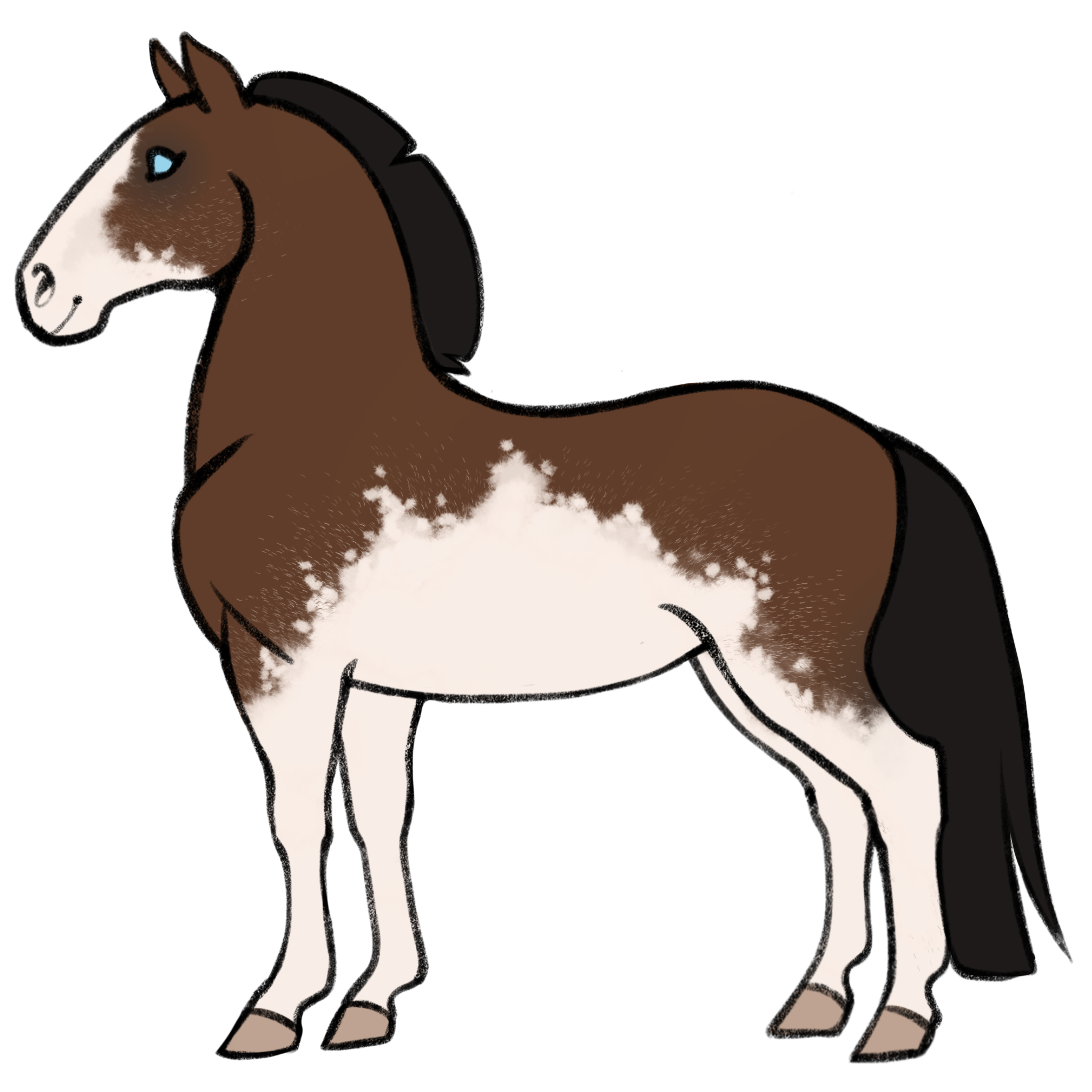

(W_) dominant white (Natural)
Name: Dominant White
Base Genotype: W_
Skin Color: Skin becomes pink under white markings.
Eyes: Blue eyes, unless an eye color gene is present, such as Tiger, Oracle, or Arcane. Those genes will take precedence.
Description: The entire horse is white, obscuring all other coat colors, modifiers, and other white patterns. Although these horses have white ears, they are not deaf like is the case with Tobiano, Overo, or other white-patterned horses.
Design Guidance: At minimum, the entire horse is white. At maximum the entire horse is white. There is no other expression of this gene.
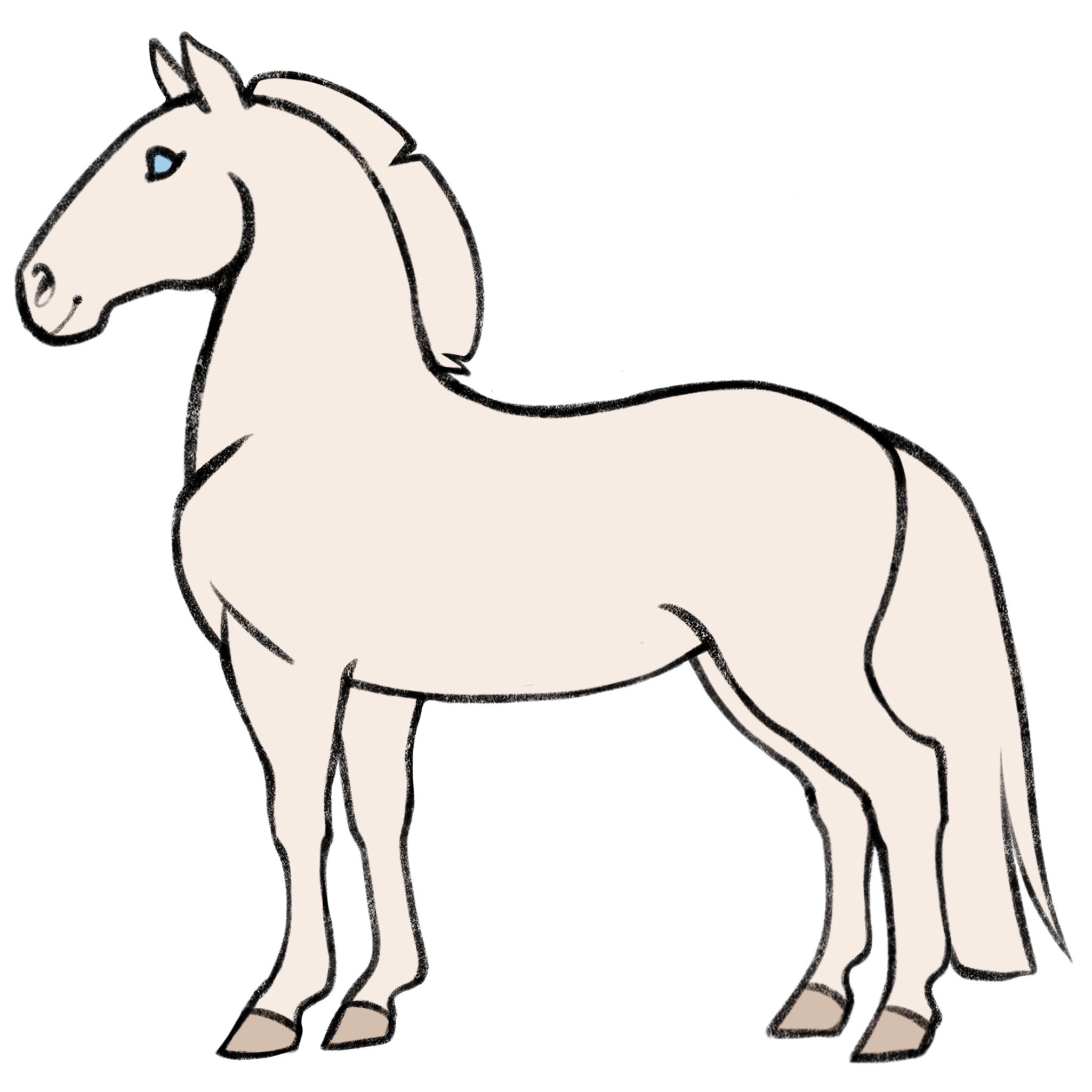
(rbrb) rabicano (Natural)
Name: Rabicano
Base Genotype: rbrb
Skin Color: Skin becomes pink under white markings.
Eyes: No effect.
Description: Rabicano is a recessive trait that requires two copies to show on the horse. It's characterized by roaning centered around the horse's flank and groin, with some of the roaning concentrating into striping that wraps around the horse's barrel. May also cause tail frosting at the base of the tail.
Design Guidance: Rabicano should have a frosted appearance. Stripes should not be "hard" striping as seen on zebras or dun, but softly concentrated striping. Minimal rabicano can be invisible. Maximum rabicano looks like the example below.

(G_) grey (Natural)
Causes the horse to grow grey or white hairs all over their body, causing the horse to go from their base coat color to grey or white over the course of their lifetime, with most horses becoming totally grey by 10 years old at the latest. Grey may be fleabitten grey or dapple grey varieties.
(SO_) songstruck (Rare)
Placeholder - Info to be determined later.
(nLP) het. leopard complex (Natural)
Name: Heterozygous Leopard Complex
Base Genotype: nLP (no PATN, single PATN, or two PATNPATN)
Skin Color: Solid or mottled where leopard spotting touches skin.
Eyes: Brown or Blue
Description: One copy of LP by itself is the switch that flips on any "patn" genes present, and allows them to be expressed.
- If there are no patn genes present, then the horse exhibits "Snowflake" - a type of white spotting that covers the horse's body, similar to birdcatcher spots, but can vary in size and number and tend to be larger and more numerous than birdcatcher spots.
- If one patn gene is present, the horse exhibits a "Semi-Blanket" pattern, with crispy edges, that starts at the rump and can cover from the rump to the shoulders at maximum. Varnish-style roaning can also be present on the body, face, and legs of the horse. This roaning can also feature spots. These spots can be ringed with a lighter rings of roan to create a leopard complex variation known as "Peacock Appaloosa" on a horse.
- If two copies of the patn gene is present, the horse is "Full Blanket" and the entire body is white, with medium to large spots that reveal the base coat beneath the white.
The Leopard Complex also causes mottled skin and striped hooves where spots touch the coronet band. If white touches the eye, the eyes can be blue or exhibit heterochromia. Leopard patterns can also exist alongside other white patterning, such as tobiano or overo, to create "pintaloosa" patterns.
Examples of a chestnut snowflake, a black base with a semi-blanket pattern (this horse also has light "peacocking" on the roan spots), and a bay horse with a full blanket pattern.
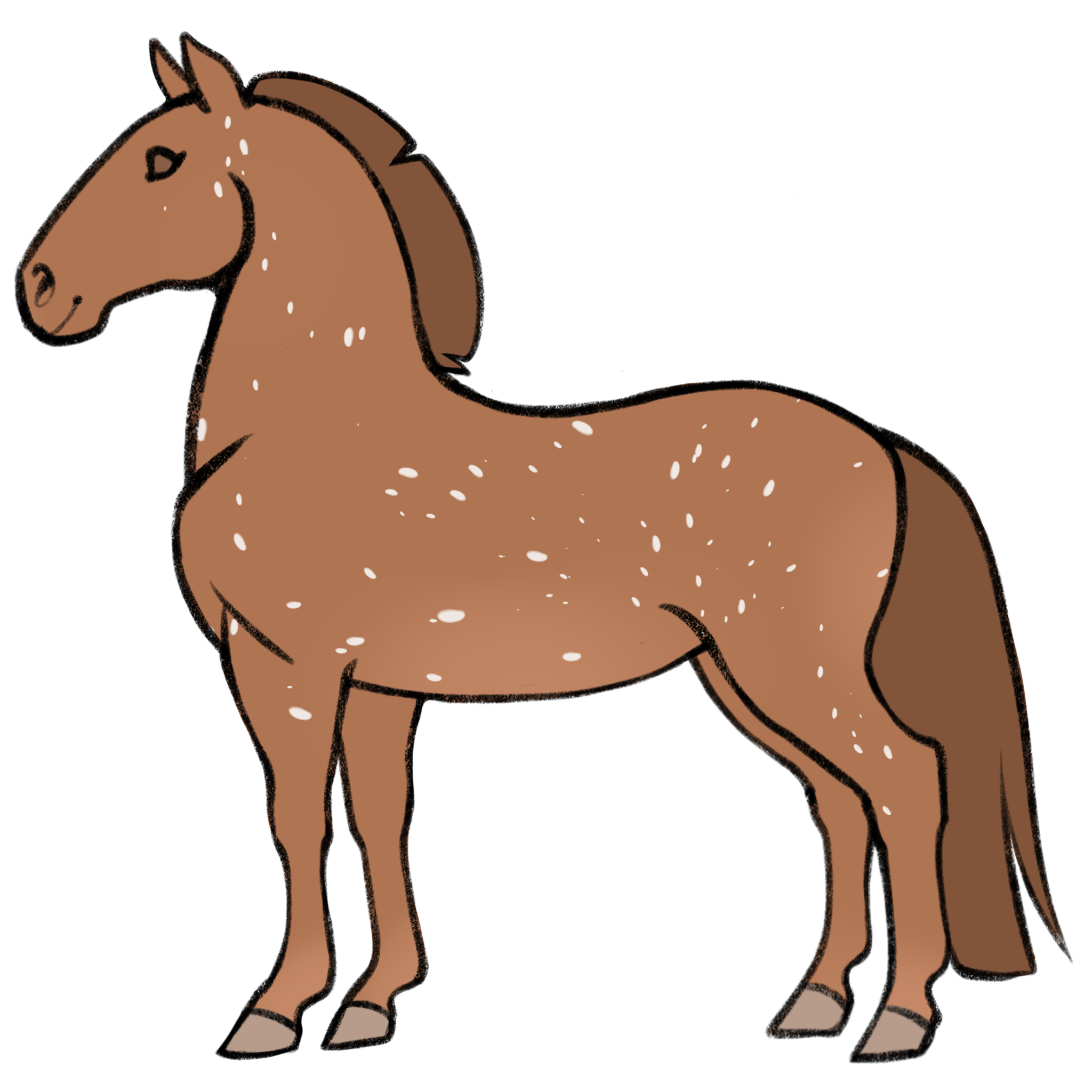
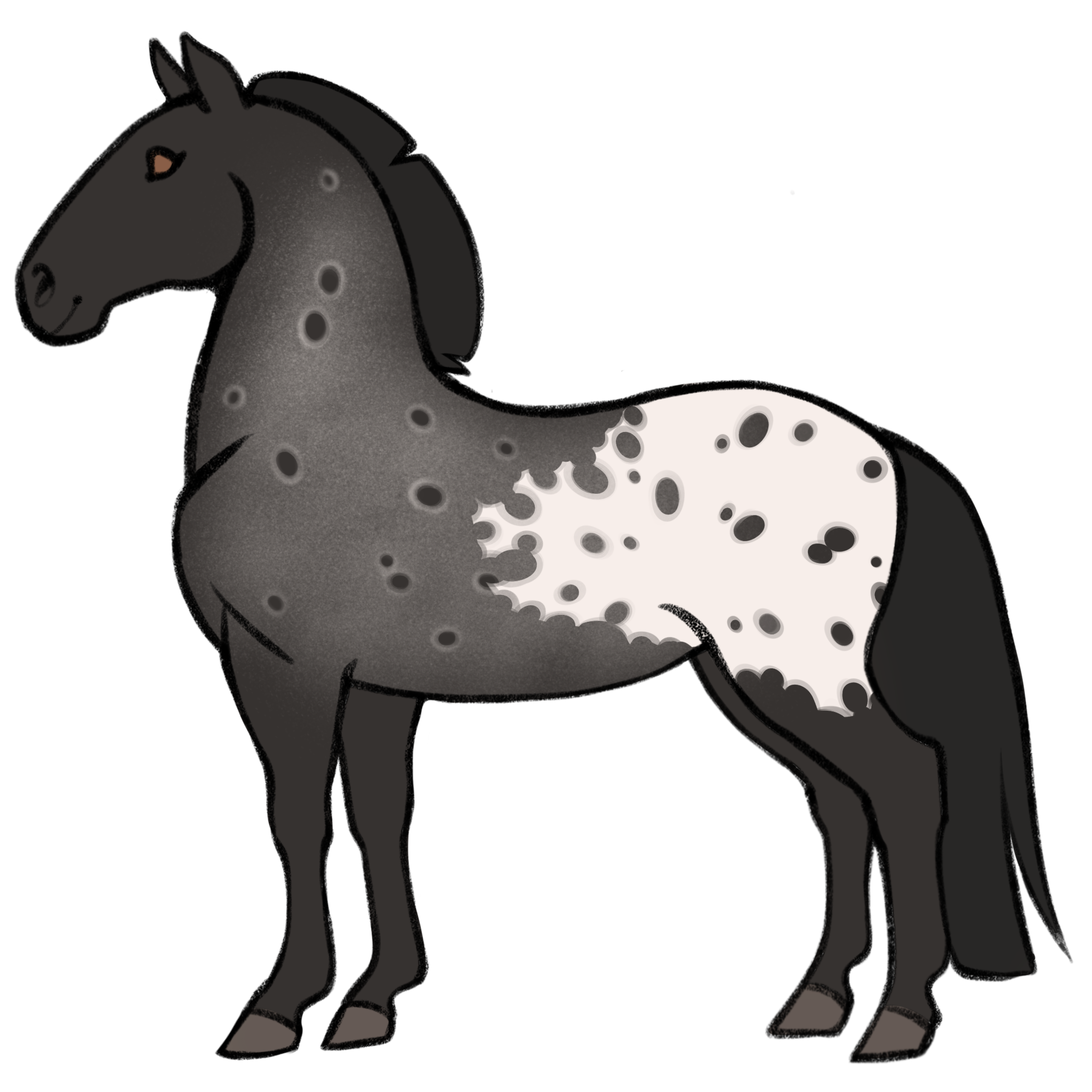
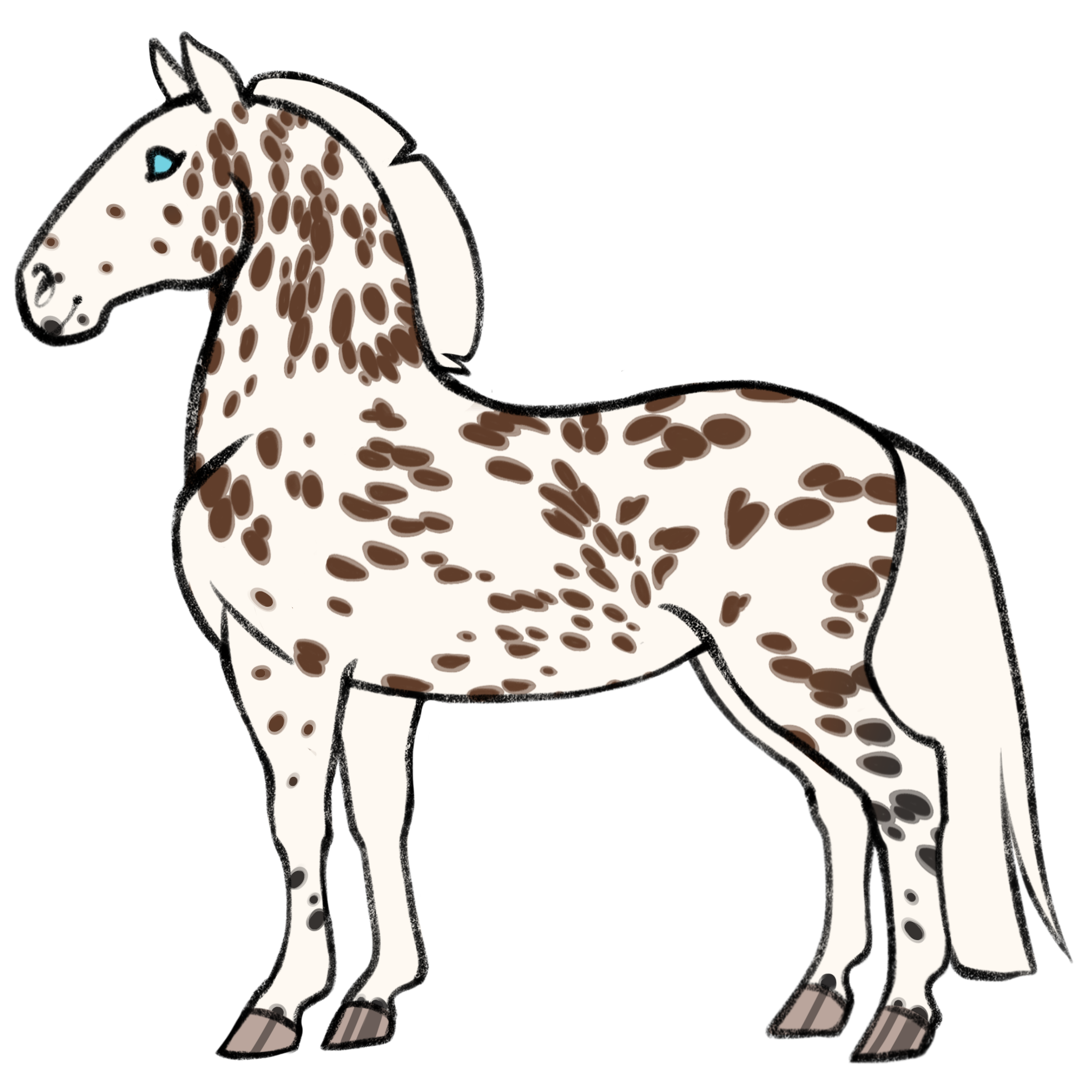
(LPLP) hom. leopard complex (Natural)
Name: Homozygous Leopard Complex
Base Genotype: LPLP (no PATN, single PATN, or two PATNPATN)
Skin Color: Solid or mottled where leopard spotting touches skin.
Eyes: Brown or Blue
Description: One copy of LP by itself is the switch that flips on any "patn" genes present, and allows them to be expressed.
- If there are no patn genes present, then the horse exhibits "Varnish Roan" - a type of roan that causes white hairs to grow in over the course of the horse's life, and is generally unstable (similar to grey). Varnish roan may cover the entire body, face, and legs, or be rather faint and patchy.
- If one patn gene is present, the horse exhibits a strong frosting of white hairs known as a "snowcap" that starts at the rump and can cover from the rump to the shoulders at maximum. Snowcaps will occasionally have very small spots of base coat visible through them, but should primarily be solid white with frosted out edges. (Unlike blanket markings, which have crispy edges and can have large spots.) These horses may have lighter vanish roaning over their body, which can also feature small spots if desired.
- If two copies of the patn gene is present, the horse is a "Fewspot" and the entire body is white, with small spots that reveal the base coat beneath the white. These spots should mostly not exceed the size of the horses eye.
The Leopard Complex also causes mottled skin and striped hooves where spots touch the coronet band. If white touches the eye, the eyes can be blue or exhibit heterochromia. Leopard patterns can also exist alongside other white patterning, such as tobiano or overo, to create "pintaloosa" patterns.
Examples of a bay varnish roan, a bay snowcap, and a bay fewspot.


